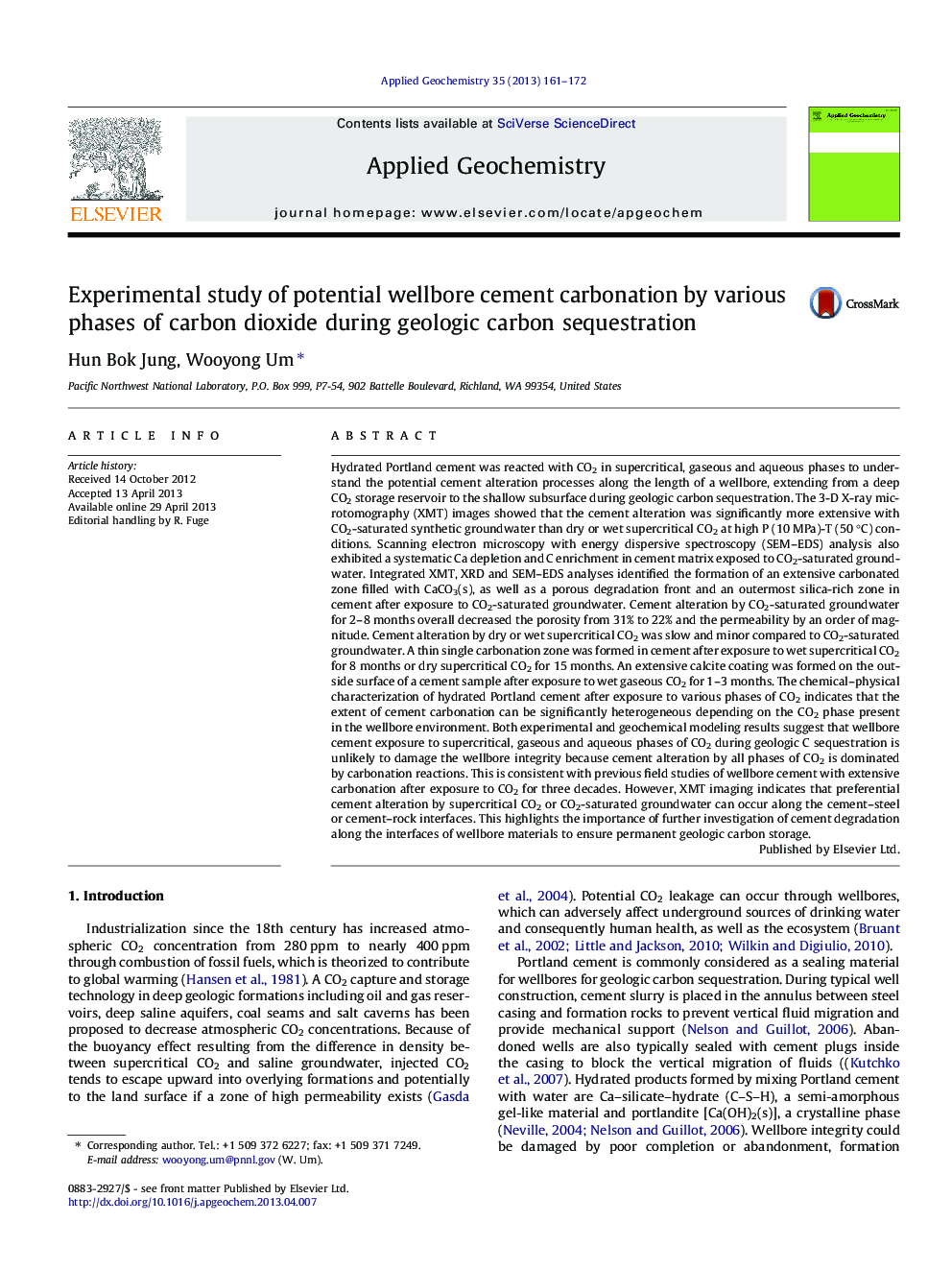| Article ID | Journal | Published Year | Pages | File Type |
|---|---|---|---|---|
| 6335351 | Applied Geochemistry | 2013 | 12 Pages |
Abstract
Hydrated Portland cement was reacted with CO2 in supercritical, gaseous and aqueous phases to understand the potential cement alteration processes along the length of a wellbore, extending from a deep CO2 storage reservoir to the shallow subsurface during geologic carbon sequestration. The 3-D X-ray microtomography (XMT) images showed that the cement alteration was significantly more extensive with CO2-saturated synthetic groundwater than dry or wet supercritical CO2 at high P (10 MPa)-T (50 °C) conditions. Scanning electron microscopy with energy dispersive spectroscopy (SEM-EDS) analysis also exhibited a systematic Ca depletion and C enrichment in cement matrix exposed to CO2-saturated groundwater. Integrated XMT, XRD and SEM-EDS analyses identified the formation of an extensive carbonated zone filled with CaCO3(s), as well as a porous degradation front and an outermost silica-rich zone in cement after exposure to CO2-saturated groundwater. Cement alteration by CO2-saturated groundwater for 2-8 months overall decreased the porosity from 31% to 22% and the permeability by an order of magnitude. Cement alteration by dry or wet supercritical CO2 was slow and minor compared to CO2-saturated groundwater. A thin single carbonation zone was formed in cement after exposure to wet supercritical CO2 for 8 months or dry supercritical CO2 for 15 months. An extensive calcite coating was formed on the outside surface of a cement sample after exposure to wet gaseous CO2 for 1-3 months. The chemical-physical characterization of hydrated Portland cement after exposure to various phases of CO2 indicates that the extent of cement carbonation can be significantly heterogeneous depending on the CO2 phase present in the wellbore environment. Both experimental and geochemical modeling results suggest that wellbore cement exposure to supercritical, gaseous and aqueous phases of CO2 during geologic C sequestration is unlikely to damage the wellbore integrity because cement alteration by all phases of CO2 is dominated by carbonation reactions. This is consistent with previous field studies of wellbore cement with extensive carbonation after exposure to CO2 for three decades. However, XMT imaging indicates that preferential cement alteration by supercritical CO2 or CO2-saturated groundwater can occur along the cement-steel or cement-rock interfaces. This highlights the importance of further investigation of cement degradation along the interfaces of wellbore materials to ensure permanent geologic carbon storage.
Related Topics
Physical Sciences and Engineering
Earth and Planetary Sciences
Geochemistry and Petrology
Authors
Hun Bok Jung, Wooyong Um,
